As I mentioned last week, Ko Bulon Lae in far southwest Thailand has long been a popular budget spot. This is particularly the case with travelling families, and this visit is no exception to the rule.
Couchfish turns one on March 31 (yes, tomorrow!)
Tomorrow is the one–year anniversary of Couchfish. To celebrate, I’m offering a 50% off deal until April 14 on annual subscriptions. So this means it costs US$35 instead of $70—for the year. Already a subscriber? First, thank you, second, feel free to send the link to your friends!
There’s an Italian family, with two daughters around the same age as Lyla and Will. We had run into them briefly earlier in the trip, on Ko Sukorn, but didn’t chat. On Ko Bulon Lae though, we have plenty of time to chat—why are Italians such terrific people?
Yes we’re there yet. School Beach, Ko Bulon Lae. Photo: Stuart McDonald.
They’re repeat visitors to Thailand—and to Ko Bulon Lae. With that gregarious Italian manner, they wave me over to join them, and in no time half the guests are sitting around. It is that kind of relaxed, easy going scene, where days slide into weeks, seemingly in the blink of an eye.
I’m sitting next to another traveller, and we swap the standard pleasantries. They’re a diver and spend a few months a year on the island. I ask do they work as a dive instructor, they reply no, instead saying “they’re a professional”. As they doesn’t seem to want to pursue the topic, I assume they mean on an oil rig or something like that.
An island jewellers. Photo: Stuart McDonald.
Later, after they’ve left, the Italian says the diver is a “water thief”. His English is good, but it takes a while to get to the bottom (geddit!) of what he means. The diver is a wreck diver—they search for lost wrecks, claim salvage and sell what they find. I wonder if there is much money in the trade, the Italian laughs “more than running an apartment in Milan!” I’m intrigued.
The kids and I wander down to the main beach. It is five minutes on foot—a blisteringly white beach with super fine, squeaky sand. Named School Beach thanks to the nearby school, it is the best beach on the island. It curls around the south west coast of the island and backs onto a grassy field dotted with shade trees. There are a few chairs and a hammock or two. There is little to do but loll about. Perfect.
Easy to see why it is popular with families. Photo: Stuart McDonald.
The kids and I set up in the shade then muck about in the shallows for a spell. The water is near perfectly translucent, but not too deep. Ideal for throwing a ball or just floating about. There is the occasional sting ray and we spend ages looking for one—but have no luck.
When the wind starts to pick up and the sun bears down, we walk down the sand to Hug Bulon, a small blow–away cafe on the beach. It is a typical beach shack—the sound of the breeze taps down the murmuring voices and we take lunch by the sea. To the south we can see Ko Tarutao, and from memory, Langkawi’s main mountain beyond it.
Peak hour at Hug Bulon. Photo: Stuart McDonald.
Later we return to the beach. Then to the hammocks. Then back to the beach. Then back to the hammocks. Will, with too many of his father’s genes in him, is busy writing in his diary, then draws up a map of “Ko Massage”. The map lists various massages he’ll give me in return for screen time. Nice try buddy.
Dinner comes and goes and then the kids crash. Back at the cafe I get talking to the diver. The cold drinks have loosened their lips a little and we chat about their trade. You need to get in fast, before anyone else, they say. Once the authorities get involved, matters become complicated. I know nothing about the salvage trade, but even I know some of the wrecks they mention. The Italian was right—far more lucrative than running an apartment in Milan.
Trying to cut a deal. Photo: Stuart McDonald.
The diver harks back a decade or so ago. Back then undiscovered wrecks were easier to find and exploit as they lay in shallower water. The authorities and regulations were not as “complicating” as now. They rattle off numbers behind good finds, and the auction houses that cleared the goods. Even subtracting a zero for bravado and beer, the numbers remain staggering. In one case they paid US$10,000 for the rights to a wreck in Indonesia—and made US$700,000 on the proceeds of what they found.
I ask how they find the wrecks. They laugh, “I dive”, but then go on to explain a network of contacts at fishing ports and so on. Often it starts with a trawler finding broken ceramics in their net—then it is all about who can get there first.
Beach food. Photo: Stuart McDonald.
We shift off underwater looting and to Thailand over the years, as we’ve both been travelling the country for decades. Like me they’re a bit mystified by the differing development arcs between Ko Lipe and Ko Bulon Lae. They put some of it down to Bulon Lae having a well established village on the island. When I mention Lipe also had a village, they scoff, noting the Urak Lawoi were roaming in a way the Bulonese never did.
They also mention another reason I’d not heard before. They suggest Lipe is a far more lucrative trip for the speedboat companies than Bulon Lae. These companies are often affiliated with, owned by, or own, hotels. Simply, Lipe is a bigger money spinner.
“Lipe has better beaches granted, but you don’t know these guys—I do. If they decided the best bet for money was Hin Ngam [a lucky stone beach island in the same area], it would have exploded instead.”
I don’t share their cynicism, but I guess they’re the one who has been working with local boat crews for decades.
Will on a mission. Photo: Stuart McDonald.
We part ways and I wander back down to Hug Bulon. I cross the school lawn field under a sky of a million stars. The bar’s coloured Hoi An–style lanterns dingle dangle in the breeze, but there’s only a couple of tables taken. The wind rushes in off the sea, its fresh touch tickles my skin, while my toes squirm in the dirt and sand.
I sit and wait for my eyes to adjust to the dark. The sea laps at the beach rather than crashes. Out beyond the black, trawler lights twinkle on the horizon ... looking for prawns not porcelain I hope.
It takes two seconds to tell someone about Ko Bulon Lae
Got a friend who you think Ko Bulon Lae might suit? Even if they’re not a Couchfish subscriber, you can share this post with them via the button below. Thank you!

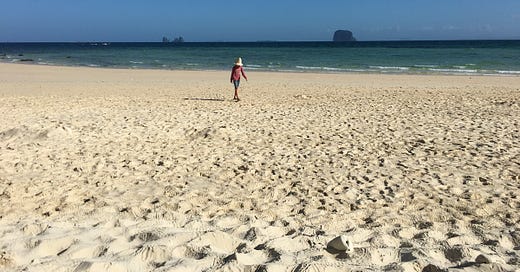


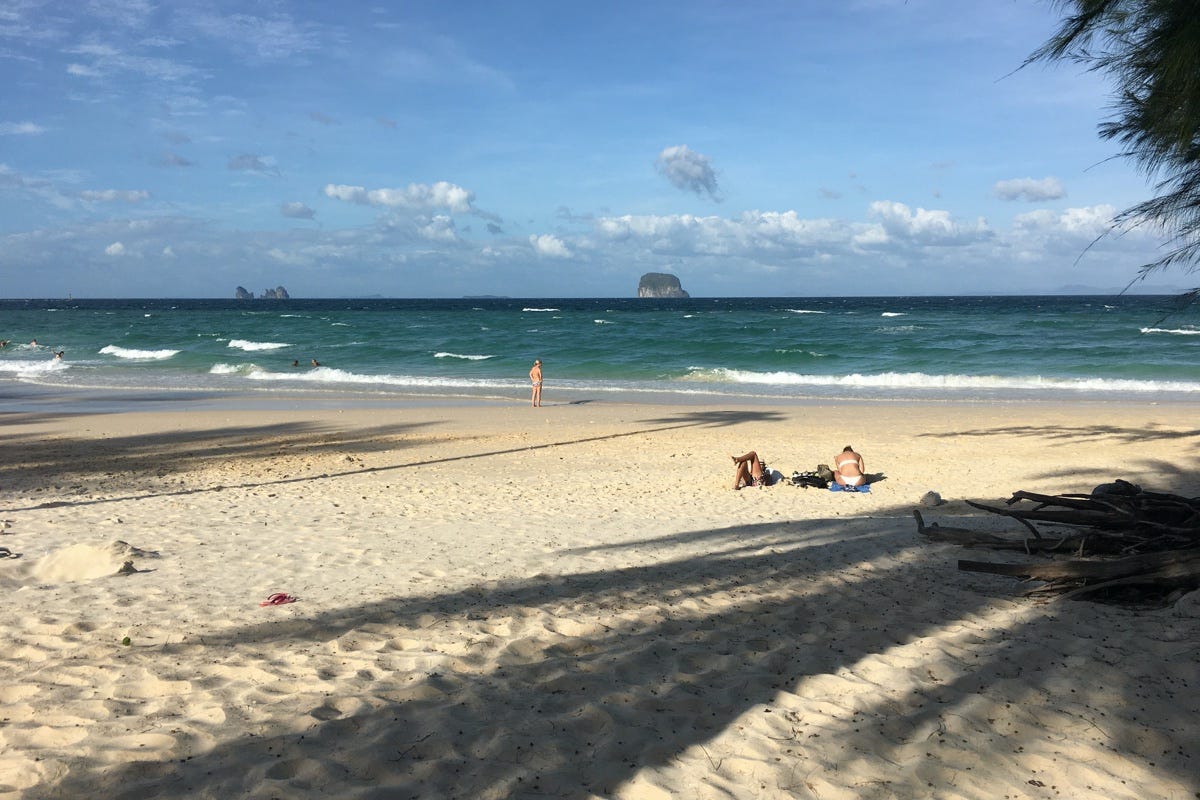
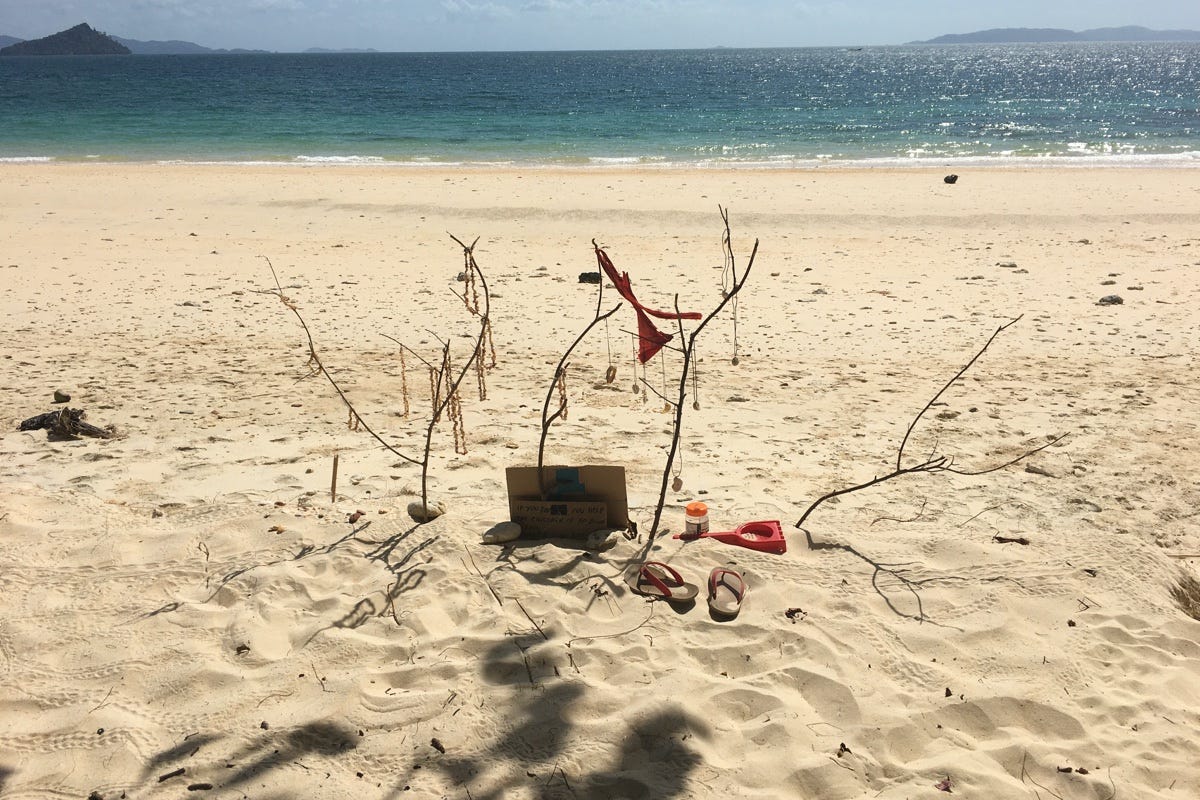
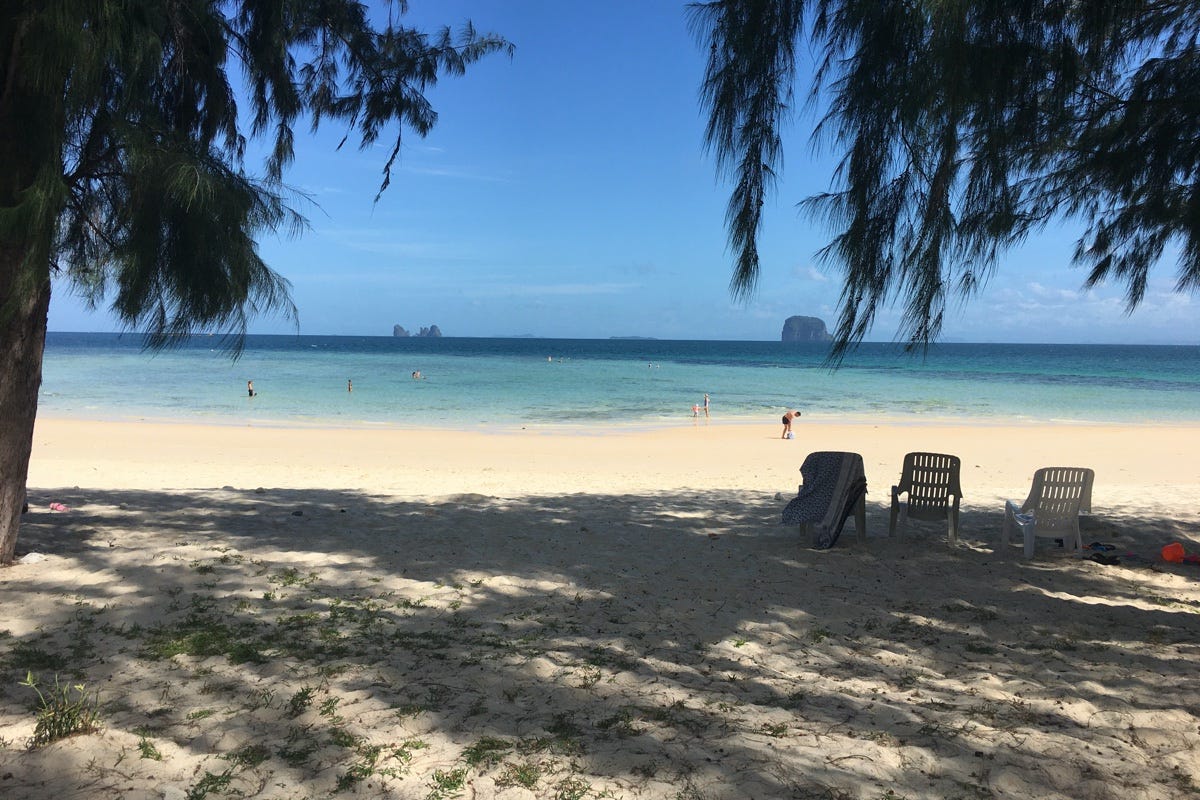
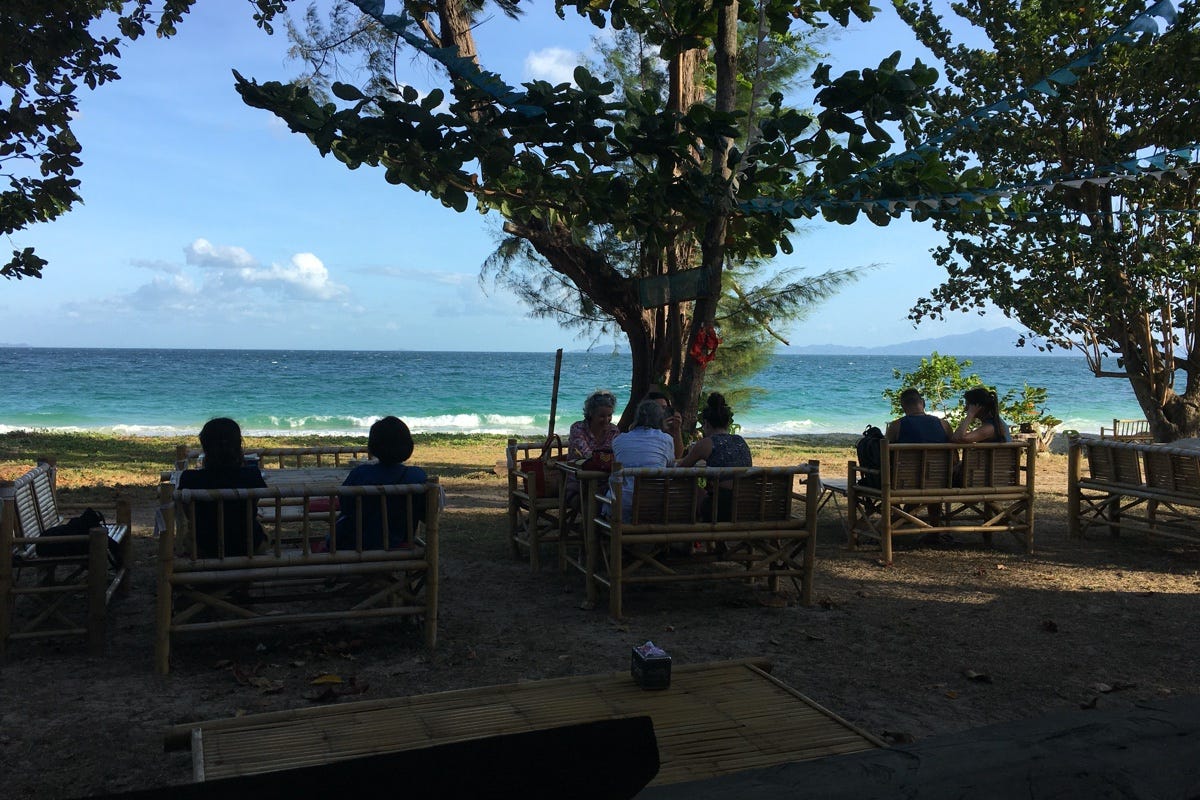
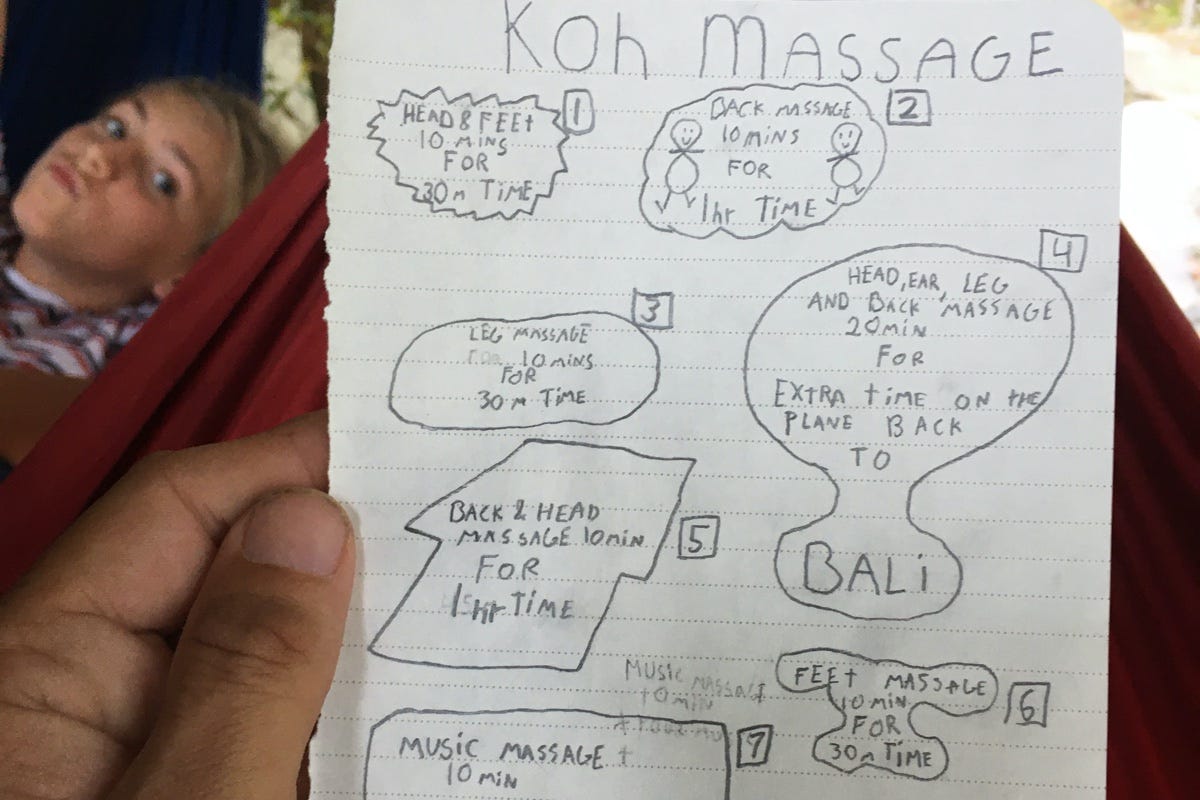
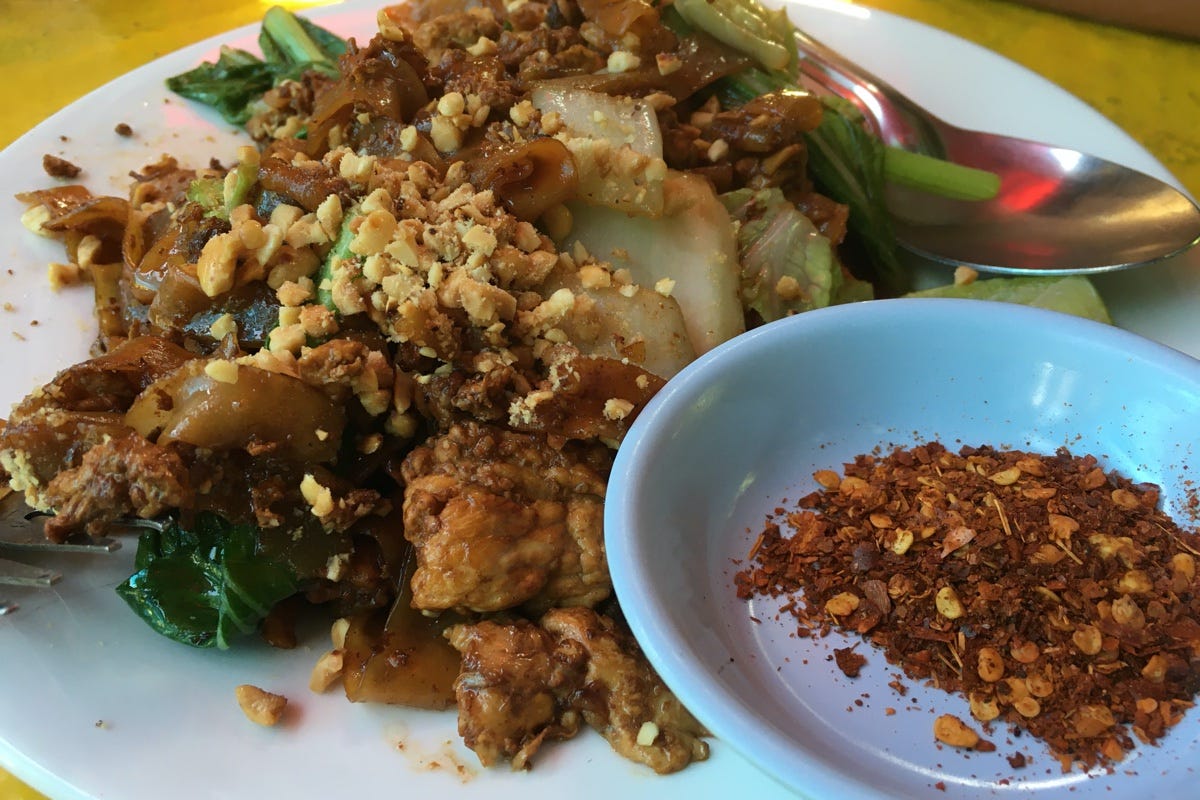










Share this post